Post-war use of submachine guns produced in Nazi Germany
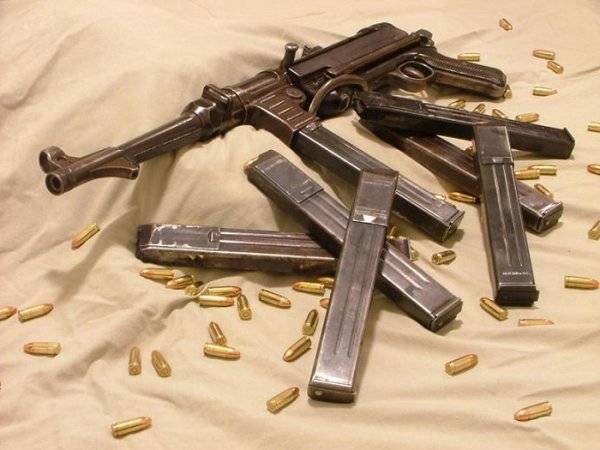
After the end of the Second World War, the victorious countries and the states that restored their sovereignty, after their liberation from German occupation, got millions of small arms weaponsmade in the Third Reich.
In the post-war period, captured German submachine guns were actively used by police and army units in about three dozen countries and participated in many local conflicts.
Submachine guns MP 38 and MP 40
During the war years, the German armed forces had a fairly large number of types of submachine guns of their own and foreign production. Judging by the “Handbook on Small Arms of Foreign Armies” published in the USSR in 1947, intended for use in small arms depots, the Soviet troops captured submachine guns in significant quantities: MP 28 (II), MP 38, MP 40 and MP 41.
The MP 38 submachine gun, developed by designer Heinrich Vollmer, who worked for Erfurter Maschinenfabrik (Erma Werke), had a revolutionary design for the late 1930s.
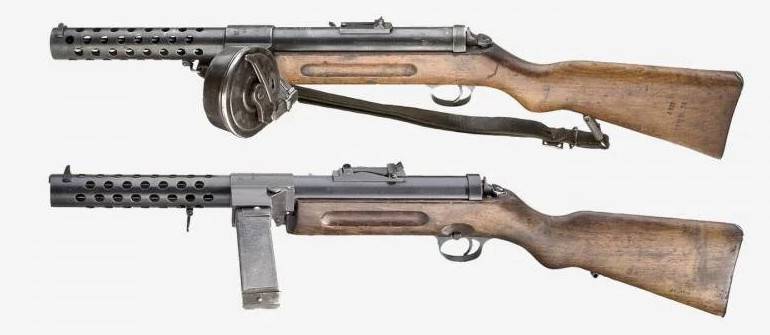
Submachine guns MP 18 and MP 28
Prior to this, all previously released German PPs outwardly looked like hand-operated carbines, had a wooden butt and stock, as well as a casing on the barrel made of a steel pipe with round or oval holes. Subsequently, in other countries, a large number of submachine guns were created, which, to one degree or another, repeated the design and appearance of the German MP 38.
The predecessor of the MP 38 was the MP 36, which is also known as the EMP 36. The main differences from previous German submachine guns were the metal folding stock and the lower location of the magazine opening.
However, at first the neck was not located strictly vertically to the barrel of the weapon, but with a slight shift forward and to the left. This decision made it possible to overcome the lack of submachine guns with side magazines. The transfer of the center of gravity to the plane of symmetry reduced the effect of changing the mass of the magazine when it was emptied on the balance of the weapon, which had a positive effect on the accuracy of fire.
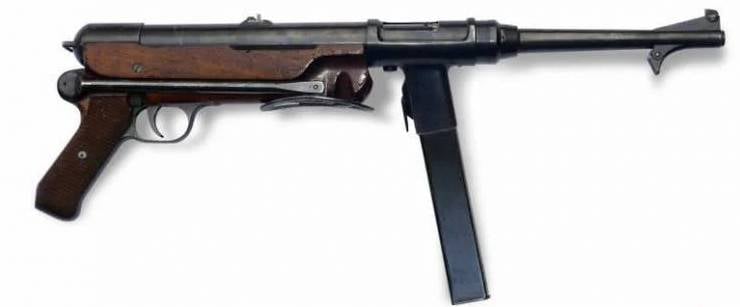
MP 36 submachine gun
A small batch of MP 36 was sent for military testing, and taking into account the comments received, the weapon was revised. To facilitate the submachine gun, new technologies and materials were used. The handguard was made of plastic, and the pistol grip was made of aluminum alloy. In the design of the serial MP 38, there were no wooden parts at all: only metal and plastic, which greatly simplified and cheapened the production process. The MP 38 submachine gun (about 25 copies produced) became the first large-scale weapon of this type with a folding butt.
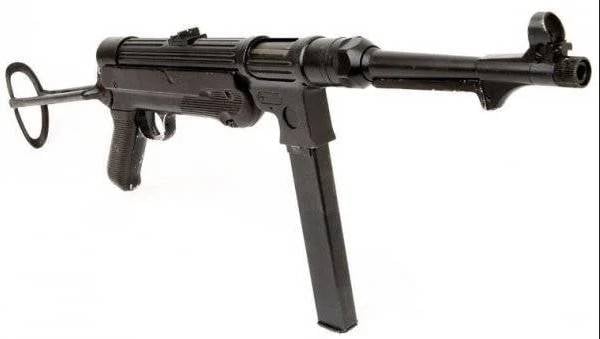
MP 38 submachine gun
The length of the MP 38 with the buttstock unfolded was 833 mm, with the stock folded - 630 mm. Barrel length - 251 mm. Weight without cartridges - 4,18 kg, with cartridges - 4,85 kg. Magazine capacity - 32 rounds. Sights consist of a front sight protected by a namushnik and a flip rear sight, which allows aimed shooting at 100 and 200 meters. The effective firing range did not exceed 120 m.
The most numerous in the German armed forces was the MP 40 (Maschinenpistole 40), created on the basis of the MP 38, this sample had a more technological design. Compared to the MP 38, the MP 40 contained more forged parts. Thanks to this, it was possible to reduce the labor intensity of production and reduce the weight without cartridges from 4,18 to 3,96 kg. The curb weight of the MP 40 was 4,54 kg.
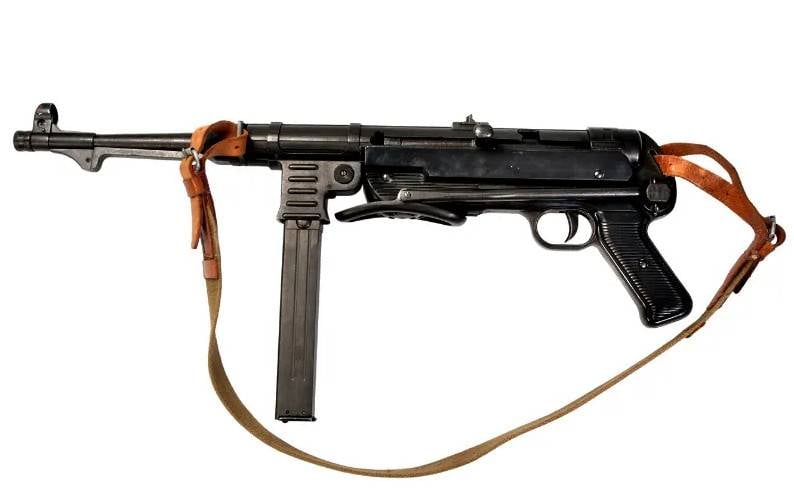
MP 40 submachine gun
Externally, the MP 40 differed from the MP 38 in a smooth (without ribs) top of the case and a different magazine mount. The MP 40 submachine gun turned out to be quite light and compact, with a folded buttstock it had small dimensions, as a result of which it was convenient during transportation and during combat operations in buildings. Thanks to a significant margin of safety, this PP digested cartridges of increased power without any problems. With proper care, the resource exceeded 20 shots.
When firing, the weapon was held by the magazine socket. An important advantage of the MP 38 and early MP 40 is the moderate rate of fire (depending on the power of the cartridge used 9x19 Parabellum 480-600 rds / min) and the smooth operation of the automation, which improved the accuracy of fire and controllability. To reduce the rate of fire, a pneumatic recoil buffer was used, which provided braking of the free shutter. Although there was no translator for the types of fire, an experienced shooter, by metering the time the trigger was pressed, could achieve single shots.
The receiver is cylindrical. The barrel has a lower protrusion for fixing weapons in the embrasures of combat vehicles. There was a thread in the muzzle of the MP 40 barrel, which made it possible to install devices that blocked moisture and dirt from entering the barrel, as well as silent and flameless firing devices. For effective noise suppression, special Nahpatrone 08 subsonic cartridges with a weighted bullet and a reduced powder load were used. With an initial bullet speed of 280-290 m / s, the effective firing range did not exceed 50 m.
During the production of the MP 40, changes were constantly made to its design. Part of the submachine guns produced after 1943, in connection with the desire to simplify and reduce the cost of the production process, lost the pneumatic damper-retarder, which was compensated by a reinforced return spring. Such PPs had a rate of fire increased to 750 rds / min, which adversely affected the accuracy and reliability of the weapon. The MP 40 also had inherent flaws: a long, heavily protruding magazine made it difficult to fire from a prone position and forced it to rise above the ground.
The cocking handle located on the left when carrying the weapon in the “on the chest” position pressed the owner’s chest, causing him inconvenience. Due to the lack of a barrel shroud, there was a high probability of burns during prolonged firing. The hinges of the folding metal stock proved to be unreliable and loosened up very quickly, which in turn worsened the accuracy.
Since 40, the MP 1940 submachine gun has been manufactured by Steyr-Daimler-Puch, Erfurter Maschinenfabrik and Haenel. In total, until October 1944, about 1,1 million copies of various modifications were produced.
Initially, submachine guns were intended for use as individual weapons by the crews of military vehicles, paratroopers, signalmen, field gendarmerie, second numbers of machine gun crews and officers directly involved in hostilities. But later they were armed with other categories of military personnel.
According to the plans of the Wehrmacht command, each infantry company should have had 14-16 submachine guns, but in reality this was not always achieved. Squad and platoon commanders were armed with MP 40 submachine guns; they were relatively more common among panzergrenadiers, tankers and paratroopers. The saturation of German infantry units with submachine guns was relatively low.
Use of captured MP 38 and MP 40 submachine guns
At the initial stage of the war, due to an acute shortage of weapons of this class, captured German MP 38 and MP 40 were in great demand in the Red Army. Before infantry units were saturated with domestic submachine guns, German PPs often served as the personal weapons of platoon-battalion commanders, they were also available to servicemen communicating with headquarters, military postmen, crews tanks fighters of reconnaissance and sabotage groups, as well as partisans. Directly at the forefront, German-made submachine guns were often considered as a reserve when repelling enemy infantry attacks in the immediate vicinity of their positions.
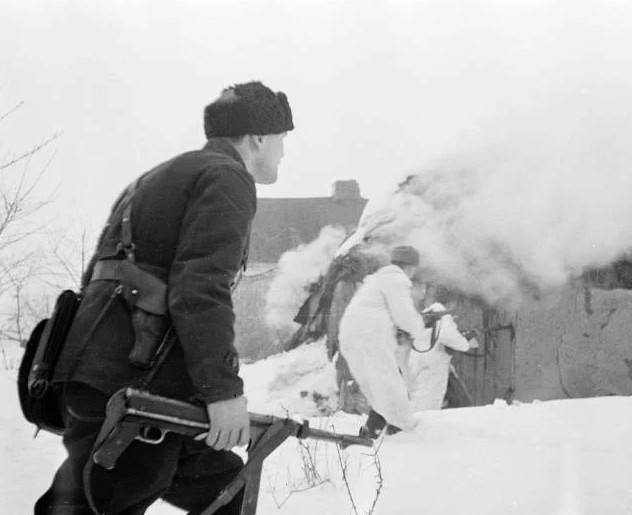
In the second half of the war, the role of captured PPs in the system of small arms of the Soviet infantry decreased. But after the loss of Germany's strategic initiative and the transition of the Red Army to large-scale offensive operations, our troops began to capture more German submachine guns.
The enemy weapons remaining on the battlefield were organized in an organized manner by trophy teams and sent to the workshops created in the rear, where troubleshooting, sorting and, if necessary, repairs were carried out. Weapons suitable for further use were sent to storage. After the end of the war, there were about 50 German submachine guns in Soviet warehouses, and most of them were MP 000s.
After the surrender of Nazi Germany, military-issue submachine guns remained in service with police forces in the GDR and the FRG until at least the early 1960s, and the MP 40 remained in the auxiliary services of the Norwegian army until the end of the 1980s.
For a long time, MP 40s were in service with the Yugoslav People's Army, and in the 1960s they were sent to the reserve.
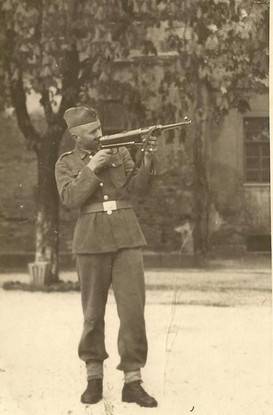
In the 1990s, German-made submachine guns were used in combat operations in Bosnia and Croatia. Apparently, these were PPs taken from storage.
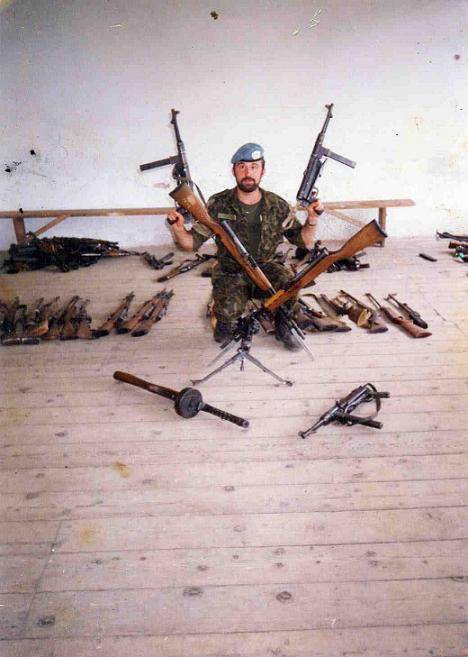
In 1956, the M56 submachine gun chambered for 7,62 × 25 mm, which was actually a revised version of the MP 40, entered service with the Yugoslav army.
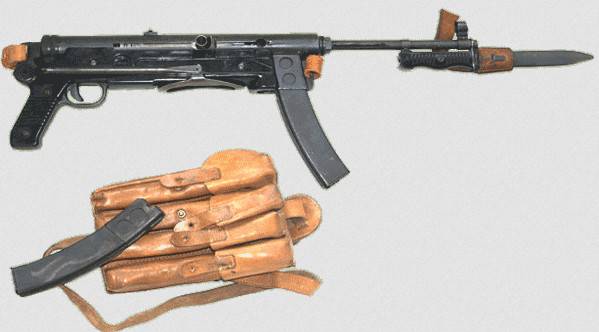
M56 submachine gun with attached bayonet and magazine pouch
In addition to the cartridge also used for firing from the TT pistol, PPD-41 and PPS-43 submachine guns, the Yugoslav M56 differed from the German MP 40 in the absence of a retarding buffer, a longer receiver, a right-hand cocking handle, the ability to conduct single fire and a mount for bayonet-knife. The mass of weapons without cartridges was a little over 3 kg. Length with folded butt - 591 mm. Rate of fire - 600 rds / min. Sighting range - 200 m.
After the end of World War II, MP 40 was actively used by the warring parties in many local conflicts.
The Chinese Communists used the German MP 40s and their local copies in the civil war against the Kuomintang troops and in the fighting on the Korean Peninsula
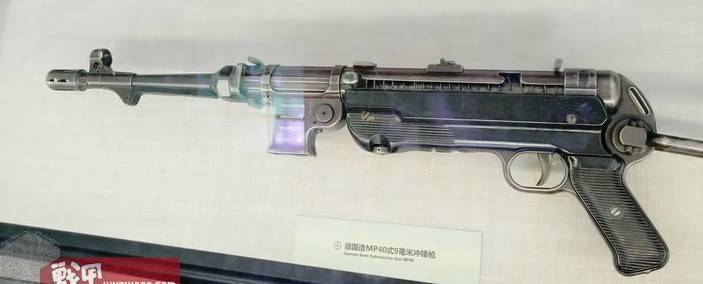
Chinese copy of MP 40 on display at the Military Museum of the Chinese Revolution
The Chinese versions differed from the original German weapons in some details and worse workmanship. The MP 40 submachine guns and their clones remained in service with the PLA until the late 1950s.
In December 1947, the United States banned the supply of weapons to the Middle East. For the most part, the arms embargo hit the Jewish community in Palestine without much interference with the arming of the British-backed Arabs. The formation of the Jewish state was facilitated by the Soviet Union, which provided Israel with not only political, but also military assistance through third countries.
There were no direct deliveries of Soviet weapons. The weapons came from Czechoslovakia, mostly of German designs. Partly captured Nazi, partly produced in Czechoslovakia itself, which during the occupation period produced a lot of weapons for the Third Reich. Czechoslovakia in the late 1940s delivered $12 million worth of weapons to Israel, which were delivered by plane through Corsica or by sea through Yugoslav ports. Deliveries from Czechoslovakia made it possible for the Israelis in April 1948 to move on to active operations.
In addition to rifles, heavy and light machine guns, the German MP 40 submachine guns, which were popular with driver mechanics, signalmen and special forces, entered service with the Israeli forces.
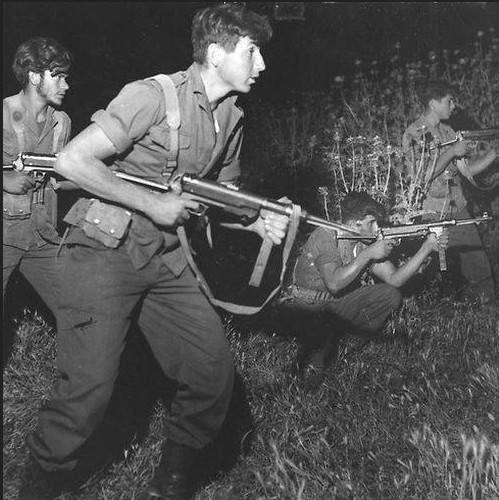
There are several photographs of Unit 101 fighters with MP 40 submachine guns. This first Israeli special unit was created in August 1953 to strike retaliation against Arab military bases. Meir Har-Zion, who is considered one of the best commanders who have ever served in the Israeli army, fought in the "101 Unit".
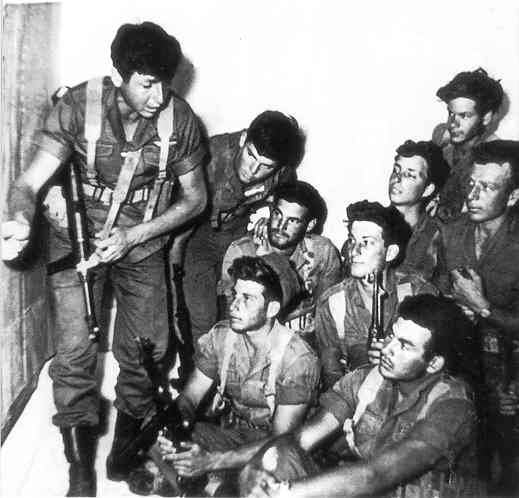
The MP 40 was used by the Israeli army and security forces until the late 1950s, after which it was replaced by the Uzi submachine gun.
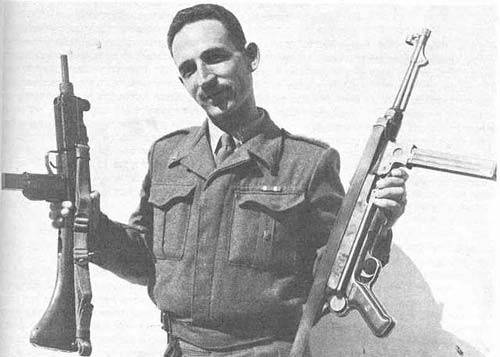
However, quite often, German submachine guns could also be seen among the Arabs who fought with the Israelis.
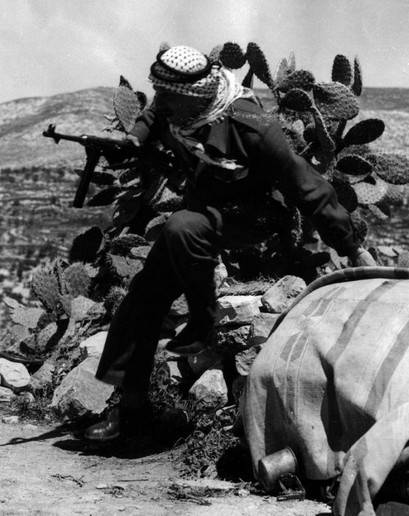
It is known that German-made weapons were supplied from Czechoslovakia and Yugoslavia to Egypt, from where they dispersed throughout the Middle East and North Africa. In addition to Egypt itself, there were appreciable quantities of MP 40s in Syria, Iraq, Sudan, Tunisia and Algeria.

Moreover, in Sudan, these German submachine guns could be found until recently.
Submachine guns produced in Nazi Germany played a prominent role during the fighting in Algeria, which lasted from 1954 to 1962.
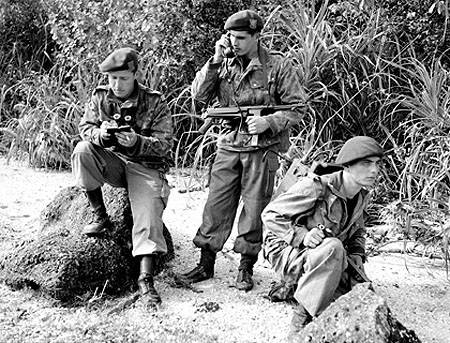
After the end of World War II, a significant part of the French paratroopers, the special operations forces of the Navy and the fighters of the Foreign Legion were regularly armed with German MP 40s.
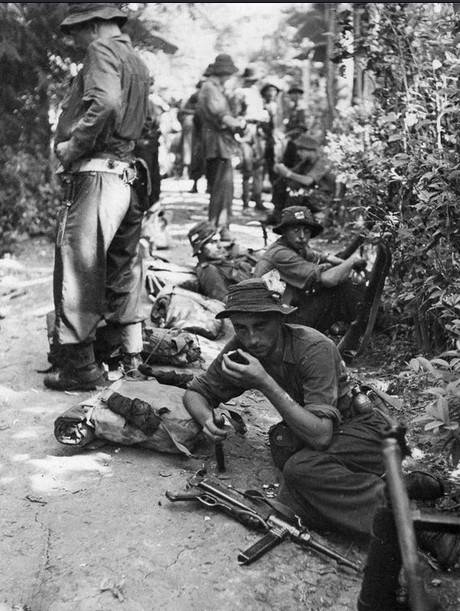
A large number of German submachine guns convenient for action in populated areas were in the hands of members of the Algerian National Liberation Front.
These weapons also had formations consisting of local residents and fought on the side of the colonial French administration.
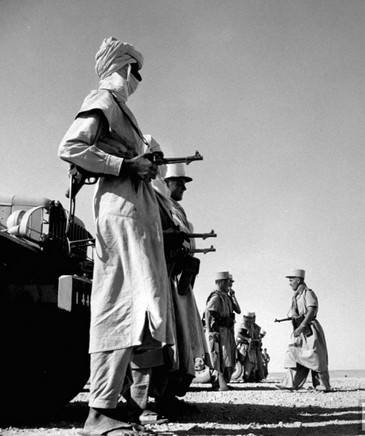
After Algeria gained independence, the MP 40 submachine guns were actively used by the Algerian army and security forces until the second half of the 1970s.
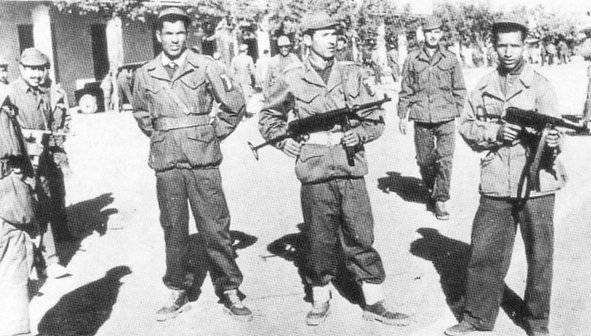
Partly these were copies captured from the French, and for the most part delivered through Tunisia from Egypt.
In addition to Algeria, the French used the MP 40 in Indochina, which is confirmed by numerous photographs.
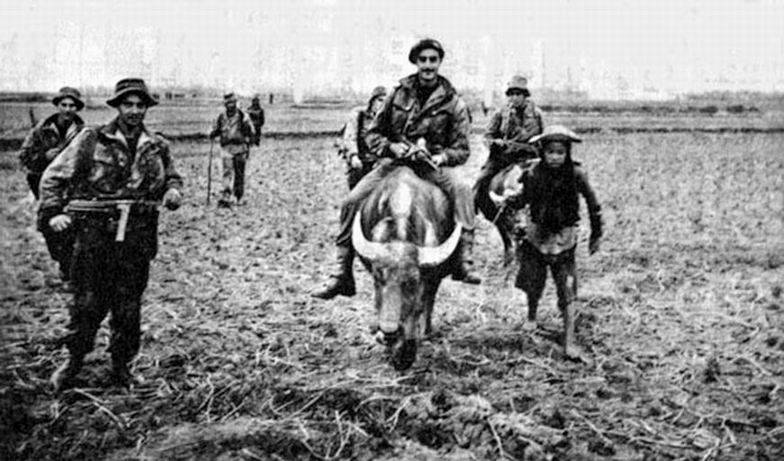
During short-lived clashes in the jungle, where the line of sight was often limited by the range of a pistol shot, the firepower and compactness of the MP 40 came in handy.
The MP 40 was also available to the Vietnamese partisans who fought for the independence of their homeland. At the first stage of hostilities, these were captured submachine guns captured from the French. Later, the Soviet Union, as part of the provision of gratuitous military assistance, transferred to North Vietnam significant amounts of German small arms that were in storage.
After France, having suffered painful losses in Indochina, withdrew its troops, peace did not come in the region. Regular North Vietnamese units and partisan detachments continued their armed struggle against the South Vietnamese army and the American contingent.
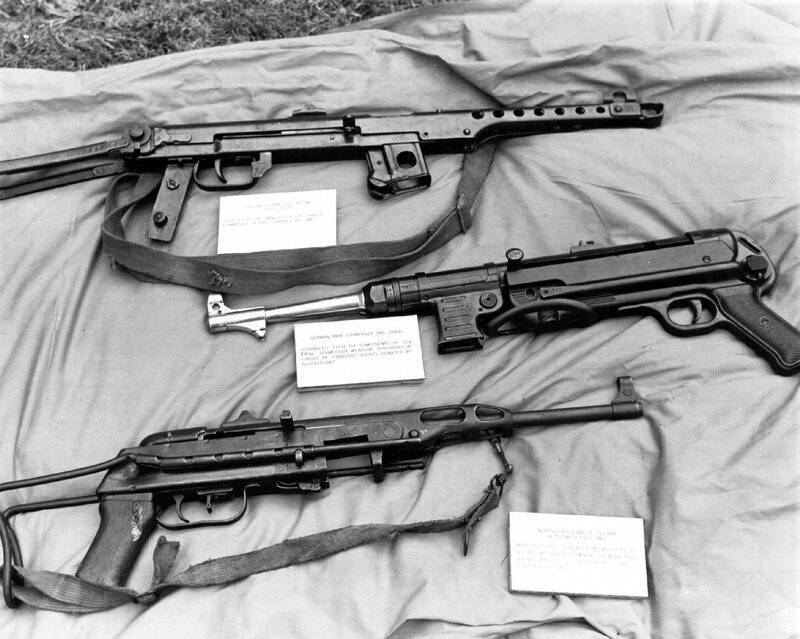
Submachine guns captured by the Americans from the Viet Cong: above the Soviet PPS-43, below the MP 40 and K-50M, which was created on the basis of the Soviet PPSh-41 and was produced in North Vietnam
The German MP 40 submachine guns, along with the Soviet PPSh-41 and PPS-43, the American M3A1 Grease Gun and M1A1 Thompson, and the North Vietnamese K-50M, fought until the end of the Vietnam War. There are many photographs of American Rangers posing with captured MP 40s.
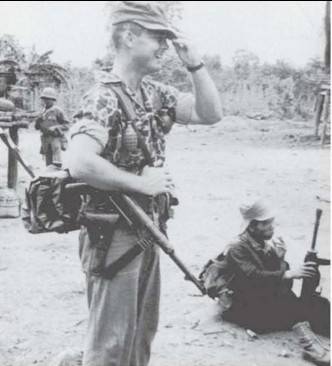
A number of captured MP 40s were used by South Vietnamese police forces, and after the fall of Saigon, they again went to the North Vietnamese army.
German-made submachine guns, often changing many owners and having been in the hands of different warring parties, spread throughout Indochina. In the 1980s, they could be found in the units of the Cambodian Khmer Rouge. Thai security forces seized MP40s from drug cartels operating in the Golden Triangle area.
From 1961 to 1974, Lisbon tried by force to prevent the secession of its African colonies. Fighting took place in Angola, Mozambique and Guinea-Bissau. After the end of World War II, economically backward Portugal, in which the dictator António de Salazar ruled for a long period of time, acquired a large number of small arms produced in Nazi Germany, including MP 40 submachine guns.
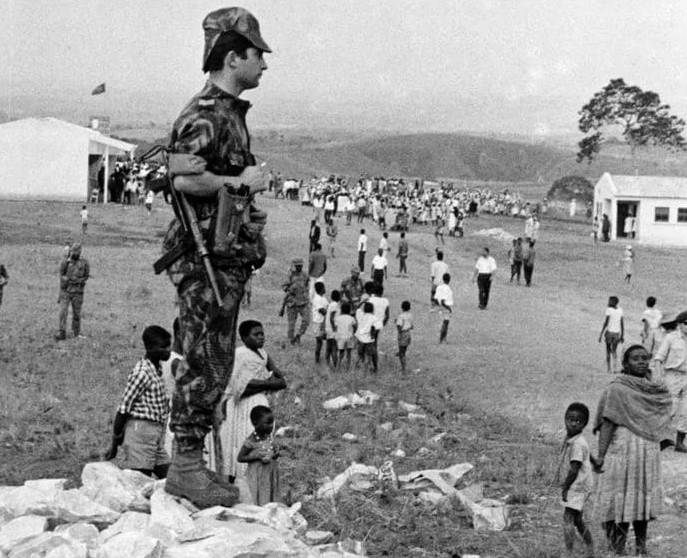
However, the MP 40 was used in combat to a limited extent and until the mid-1960s. The German submachine gun inspired the Portuguese officer Francisco Gonçalves Cardoso to create his own model, in which design solutions were borrowed from the German MP 40 and the American M3A1 Grease Gun.
The submachine gun was adopted in 1948, was mass-produced by Fábrica do Braço de Prata until 1955 and had the brand name FBP M.48 (military designation m / 948). Later, improved modifications m / 963 and m / 976 appeared, produced until 1980.
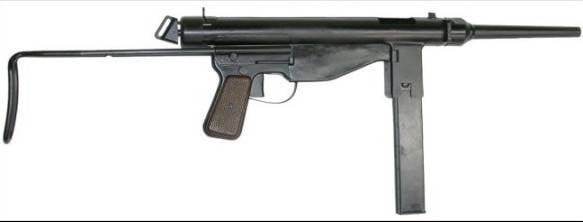
Submachine gun FBP M.48
The weapon chambered for 9x19 mm without ammunition weighed 3,75 kg, with a magazine filled with 32 rounds, the weight was 4,4 kg. Length with butt folded - 635 mm, with extended butt - 813 mm. Rate of fire - 500 rds / min.
In the 1950s, Afghanistan bought large quantities of used German small arms from Czechoslovakia and France. Together with 7,92 mm Mauser 98k carbines, 9 mm Luger P.08 and Walther P.38 pistols, a certain amount of MP 40 got into the Afghan armed forces and police.
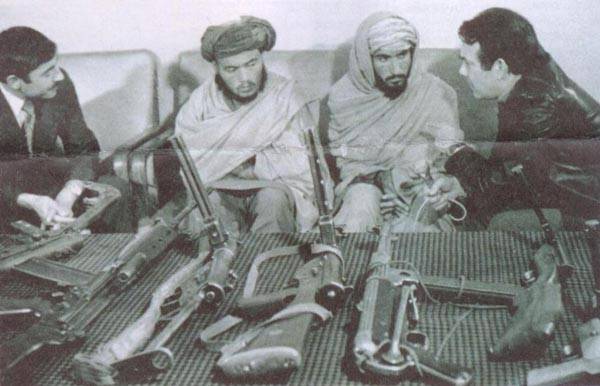
Subsequently, rare German submachine guns, in parallel with the British STEN and Sterling, the American M3A1 Grease Gun and M1A1 Thompson, the Swiss Carl Gustaf M / 45 and the Soviet PPSh-41, were used by spooks against government Afghan forces and military personnel of the "limited contingent".
Taking into account the recognition of MP 40 and historical valuables, the original weapon, released during the Second World War, is in steady demand among collectors. Replicas were also produced for sale on the civilian market.
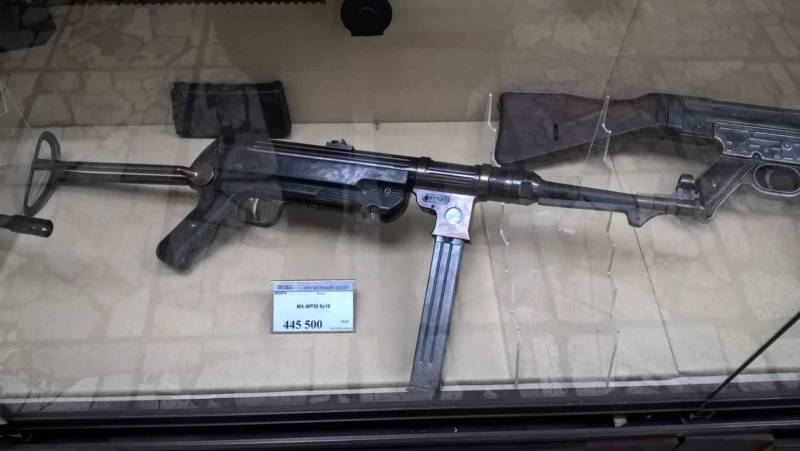
For example, Molot ARMZ LLC on its website, along with civilian versions of Thompson and PPS-43 software, still offers a “hunting” self-loading MA-MR 38 caliber 9x19 Parabellum, according to some reports, manufactured outside of Russia. According to the available information, this weapon has the possibility of only a single fire, with the butt folded, the possibility of firing a shot is excluded, special marks are made on the muzzle of the barrel and in the cup of the bolt by punching.
To be continued ...
Information